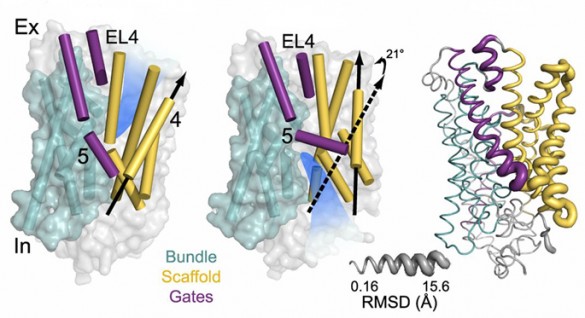ATP-binding cassette (ABC) transporters use the energy of ATP hydrolysis to move a wide variety of molecules across cell membranes. They are involved in multi-drug resistance of tumor cells, cystic fibrosis and a range of inherited human diseases. Mapping the structural motions of ABC transporters is key to understanding how they work.
Smriti Mishra, Ph.D., Hassane Mchaourab, Ph.D., and colleagues have investigated the conformational cycle of BmrCD, a representative bacterial ABC transporter composed of two different subunits. They used spin labeling and Double Electron-Electron Resonance spectroscopy to monitor the movement of ATP-binding regions and transmembrane domains that form the transport pathway across the membrane.
In the journal eLIFE, they report previously unobserved structural intermediates of the ATP-binding regions and show that the transition of the transmembrane domains from inward- to outward-facing is driven exclusively by ATP hydrolysis. The findings show that ABC transporters have divergent mechanisms and shed light on the workings of these important molecules.
This research was supported by grants from the National Institutes of Health (GM077659, GM087519, GM104601).
Send suggestions for articles to highlight in Aliquots and any other feedback about the column to aliquots@vanderbilt.edu















